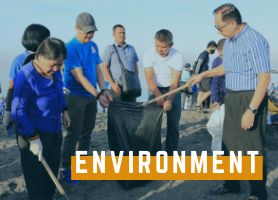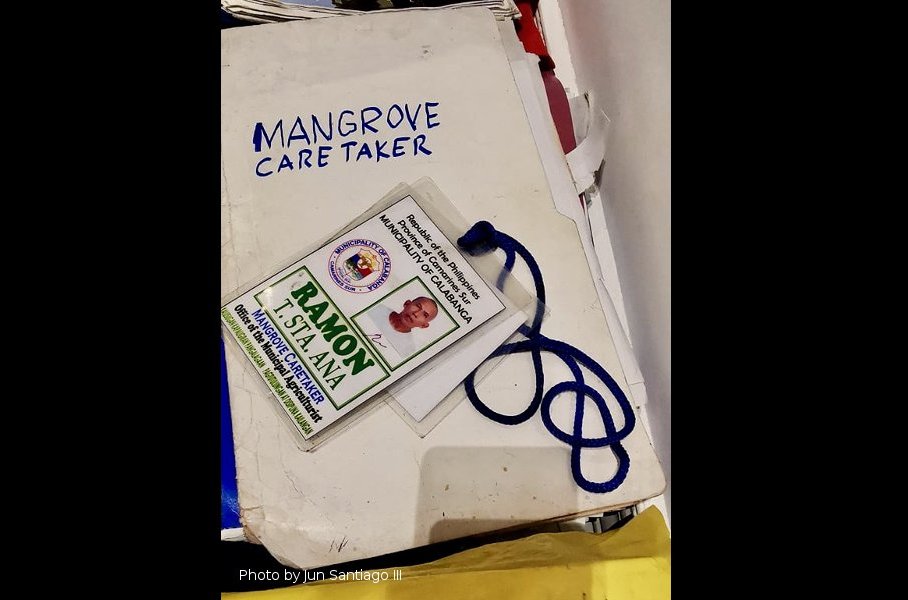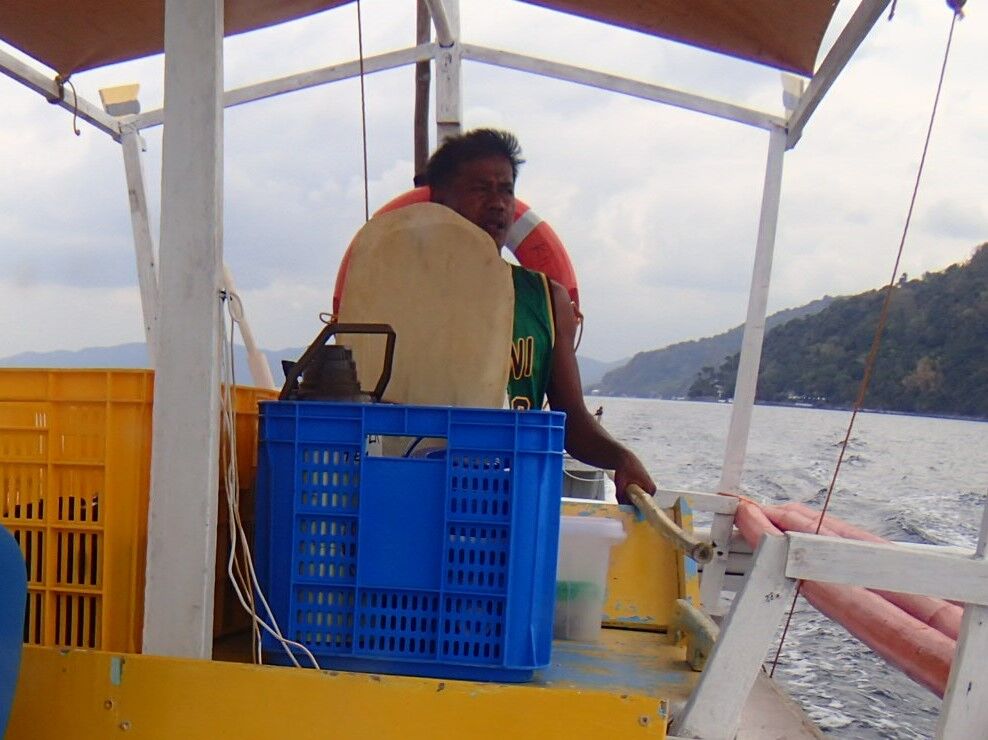
Mang Onad- Bantay Dagat volunteer
Mang Onad has been a tour boat operator for the past 20 years and
business has gotten better since he started.
He rents out his boat, The Kilyawan, to scuba divers normally for
P3,000 per trip, taking them to sites in Mabini and Tingloy towns, in
Batangas province. He jacks up the rate slightly for guests who want
to go to the southern side of Maricaban Island or to Verde Island,
also in Batangas.
That’s because Mabini, Tingloy, and Maricaban are among the most
popular dive spots in the area. They are so popular among scuba
diving that five or more dive boats can sometimes be seen in the same
dive spot; this is above the capacity that an anchoring bouy can
accommodate.
This leads to a problem. When the buoy can no longer accommodate a
boat, the boatman will need to drop anchor, which then damages the
corals.
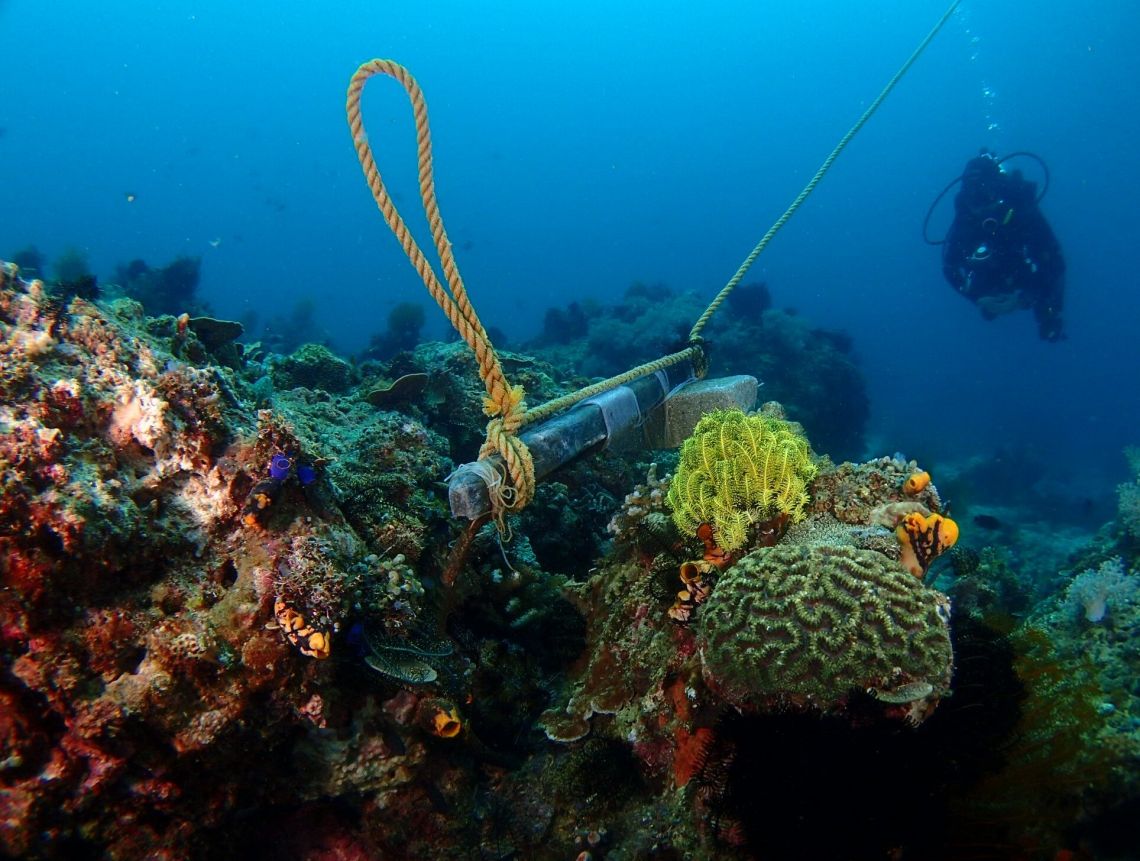
Bad practice: Anchor dropped in Maricaban corals.
This destructive practice is expected to get worse as more people
troop to the beach and the sea to beat the summer heat.
The Batangas Provincial Tourism and Cultural Affairs Office
expects tourist arrivals to exceed 11 million this year. Mabini and
Tingloy – about a three-hour drive from Manila by car (and a boat
ride in the case of Tingloy) – are popular tourist destinations for
residents of Metro Manila.
Tourism vs environment protection
Locals like Mang Onad are ambivalent towards the avalanche of
visitors.
More tourists mean more income. But, at the same time, they are
aware of the damage a careless snorkeler, a novice scuba diver, or an
irresponsible visitor can cause especially to underwater sites.
Fishing had been the traditional source of livelihood for locals
up to the 1980s. But commercial fishing operations entered the area
and, with their lift nets or basnig /basnigan, took the lion’s
share of the catch closer to the reefs.
Dwindling catch forced local fishermen to venture farther and
farther out to the high sea. Many even resorted to dynamite fishing.
In the early ’90s, as word got out about Tingloy and Mabini’s
beautiful beaches and splendid ocean floor, tourists started
trickling in. They hired dive boats and rented rooms. These days,
they come in droves.
The influx of tourists is an economic bonanza for the communities
but it is taking a heavy toll on the environment.
A photo of Masasa Beach in Maricaban Island during Holy Week last
year went viral, not for the white sand or captivating scenery but
for the huge crowd that filled almost every inch of the beach.
These same visitors left piles of garbage. There is no landfill
site in Maricaban. Mabini town has refused to accept its neighbor’s
trash as it was also burdened with its own.
Coral reefs are the major casualty.
Tourists have stepped on corals. Some snap off a piece to take
home as a souvenir, not realizing that corals are animals and that
they could die when you cut off a piece.
It is apparent that many tourists are ignorant of the role of
coral reefs in the ecosystem. Corals are home to 25 percent of all
ocean’s marine life. When corals are destroyed, the marine population
are deprived of their habitat endangering their existence.
Coral reefs also provide an important barrier against the ravages
of storms, hurricanes, and typhoons. The storm surge that killed over
6,000 during typhoon Yolanda (Haiyan) would not have been as
destructive had the coral reefs in Leyte been healthy.
Early attempts at conservation
Some four decades ago, when dynamite fishing was rampant in Mabini
and Tingloy, divers would hear the blasts while diving. The boatmen
were unaware because sound travels four times faster underwater than
at the surface.
Concerns for the deteriorating marine habitat encouraged concerned
divers to initiate the installation of artificial reefs made of used
tires. They copied a program that was already in place in Florida.
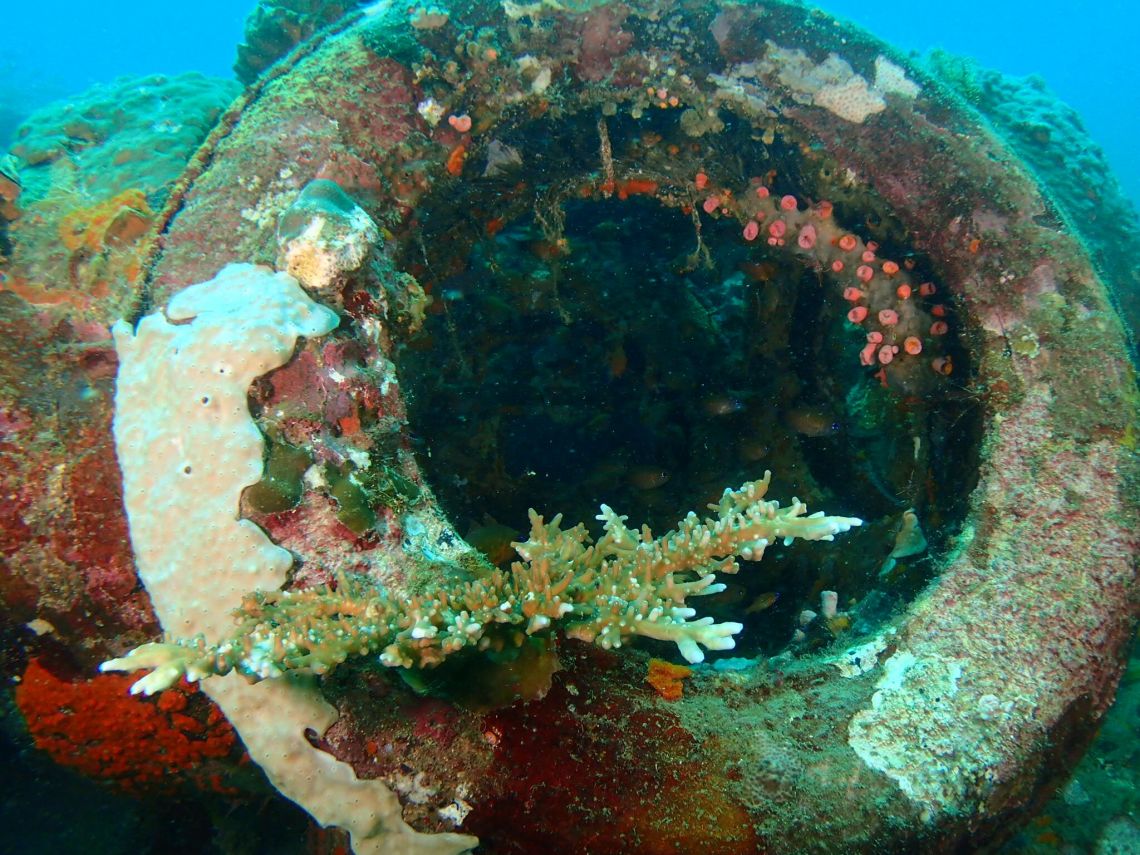
Corals on old tire in Mabini’s ocean floor.
This waste management and conservation program continued well into
the mid-1980s until it was found that the rubber tires were doing
more harm than good.
Constant water motion caused the bindings to loosen and snap,
scattering the tires and damaging natural reefs in the vicinity.
Also, tires contain black carbon, sulphur, zinc oxide, and other
chemicals that inhibit coral growth.
Fortunately the passage of time has a way of dulling, if not
correcting, mistakes.
Forty years later, most of the tires have already settled in the
sand. The harmful chemicals seem to have all but dissipated, turning
them into a more palatable substrate for coral larva to finally
attach and grow.
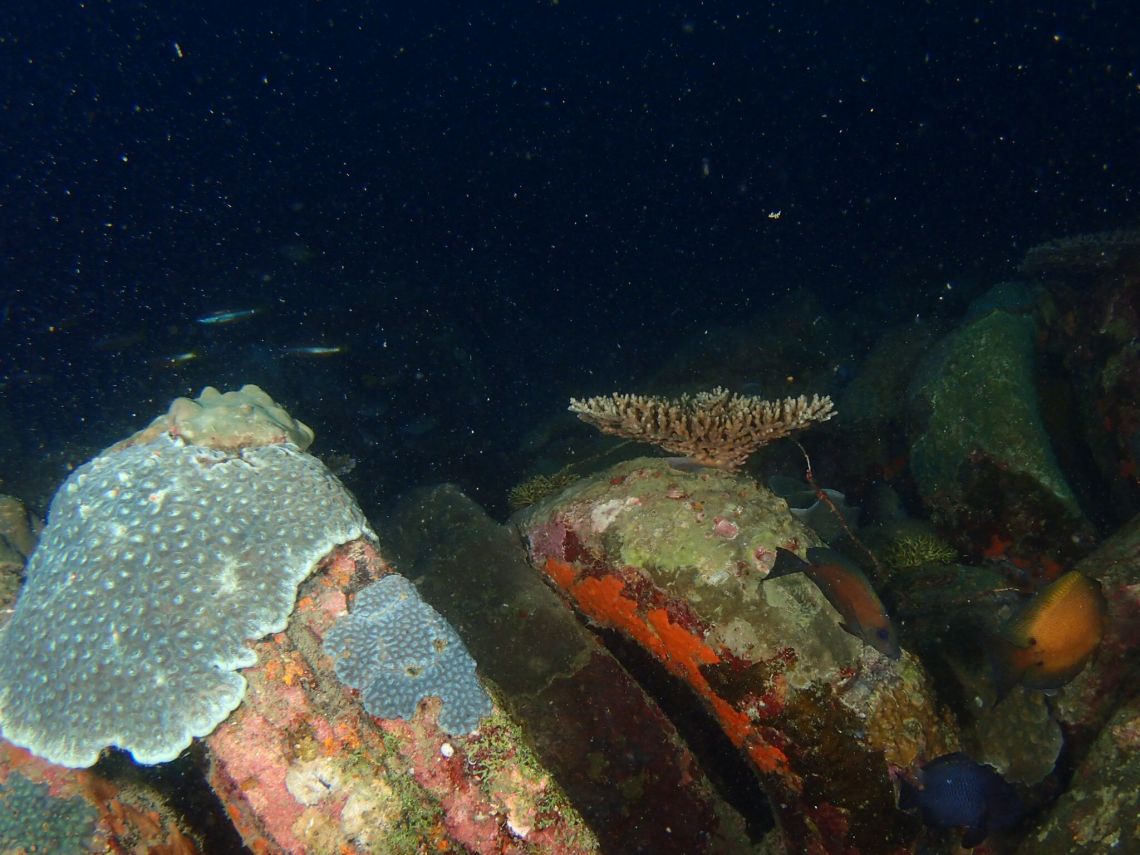
There is no more dynamite fishing in the area, said Mang Onad who
is also a Bantay Dagat volunteer, a sort of fish warden.
Compressor diving
Local environmental watchers have to deal with another kind of
problem–the occasional compressor diver.
Compressor diving involves the use of refurbished compressors from
discarded air conditioners or refrigerators attached with a long tube
which the diver bites in place so he is fed air while underwater.
He
then positions a wide net where fish are schooling and signals his
accomplices to pull up at the right time. The practice depletes the
fish stock. It is also harmful to the diver because residual oil from
the unfiltered air will likely lead to respiratory disease.
Mang Onad recalled that he recently got a call from his fellow
Bantay Dagat volunteers about compressor divers in one of the reefs.
It was 1:30 in the morning.
Mang Onad and his team promptly proceeded to the site and trained
their lights on the poachers who quickly dispersed.
There were prior incidents where the Bantay Dagat volunteers would
apprehend the divers themselves and turn them over to authorities.
The Parasan Marine Protected Area
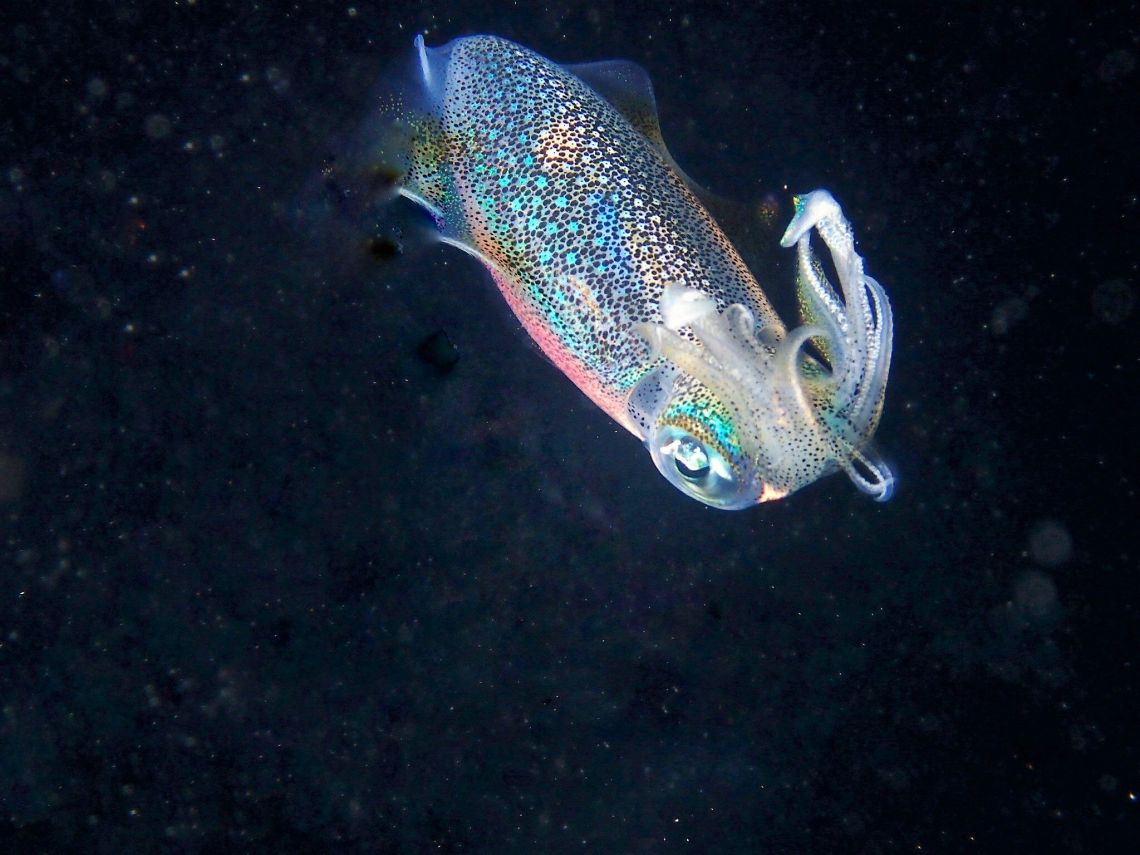
The awesomeness of a squid.
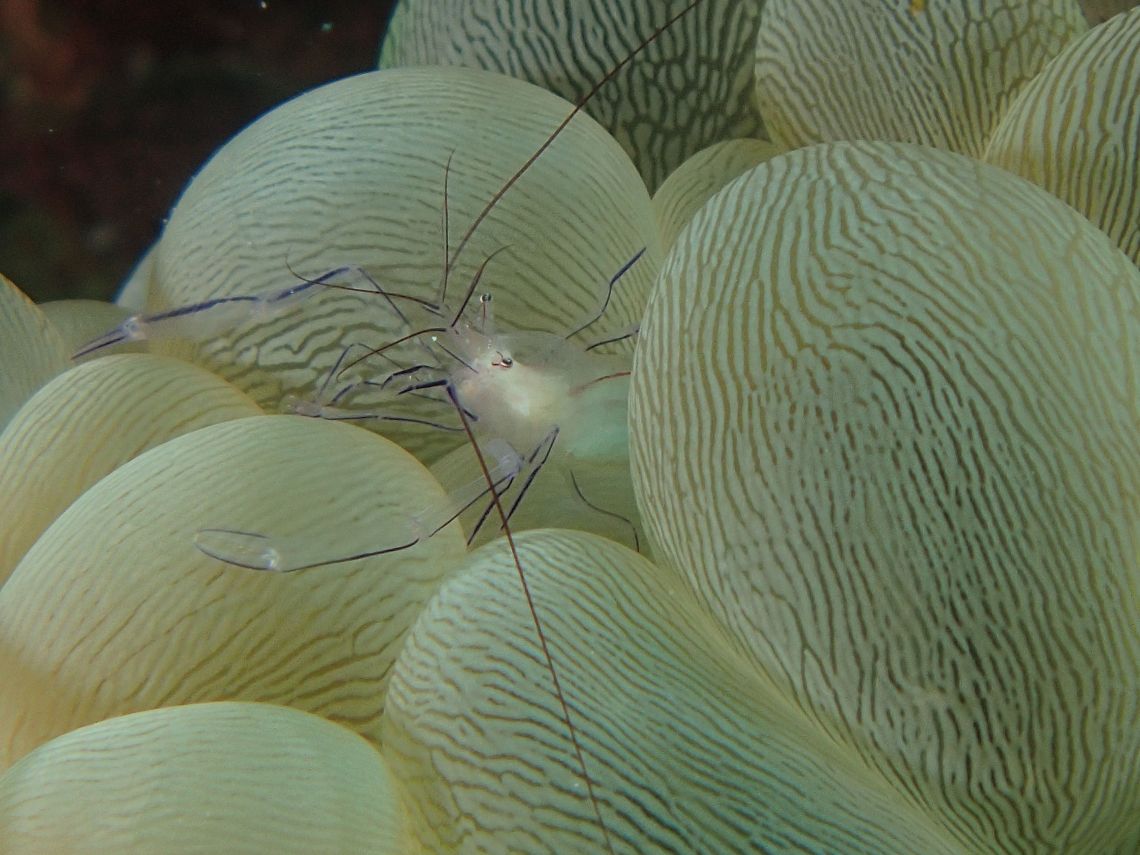
Underwater splendor in Tingloy: Shrimp in bubble coral.
Lessons from the past are not lost on the community of
Tingloy.
On Novermber 26, 2018, the municipal council
passed an ordinance declaring the 22-hectare reef in front of Masasa
Beach in Barangay San Juan as the Parasan Marine Protected Area.
The ordinance sets aside a core zone where no marine resource
extraction, including fishing, is allowed and provides the legal
basis for the apprehension of violators.
With the assistance of Pusod, an NGO supporting the area,
community members have been mobilized to monitor the reef and its
environs. Some were trained in free diving to help compile data and
to orient and guide visitors on how to best appreciate the reef
without causing damage.
Additionally, Tingloy was able to secure a grant for the
construction of a Nature Conservation Center from Seacology, a small
NGO based in Berkeley that provides funds for communities willing to
care for their natural resource.
Plans are also afoot for the construction of a Materials Recovery
Facility to support waste management efforts.
Political will counts a lot but any program still requires the
cooperation of the people. The Conservationists’ Golden Rule
remains the best guideline: “Take nothing but pictures, leave
nothing but footprints, keep nothing but memories.”
(The author, Ferdie C. Marcelo, is the Field Representative
for the Philippines of Seacology, a nonprofit based in Berkeley,
California whose mission is to work with islanders around the world
to protect threatened ecosystems. This story is produced by VERA Files under a project
supported by the Internews’ Earth Journalism Network, which aims to
empower journalists from developing countries to cover the
environment more effectively.)


